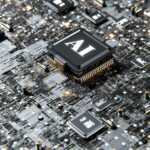The Dawn of a New AI Era
The year 2025 marks a pivotal moment in the evolution of Artificial Intelligence. We’re moving beyond experimental phases into widespread, transformative applications across nearly every sector. AI is no longer just a buzzword; it’s the engine powering significant technological shifts, reshaping industries, and redefining human-computer interaction. Let’s explore the key AI trends of 2025 that are at the forefront of this revolution.
1. Agentic AI: Intelligent Systems Taking Initiative
Forget simple task automation; 2025 is the year of Agentic AI. These are sophisticated AI systems capable of understanding goals, planning multi-step actions, making decisions, and executing tasks autonomously with minimal human intervention. From AI-powered “digital employees” handling complex customer service inquiries and project management to personal assistants that proactively manage your schedule and information flow, agentic AI is set to dramatically enhance productivity and efficiency.
- Key Impact: Revolutionizing workflows, enabling complex problem-solving, and creating new forms of human-AI collaboration.
- Examples: Autonomous financial advisors, AI project managers, proactive healthcare assistants.
2. Advanced Generative AI: Beyond Text to True Multimodality
Generative AI continues its explosive growth, but 2025 sees a significant leap towards true multimodality. AI models are becoming adept at understanding, processing, and generating content across diverse data types – text, images, audio, video, and even code – in a seamlessly integrated manner. This means AI that can generate a complete marketing campaign (text, visuals, video script) from a simple prompt, or create interactive 3D environments from sketches and descriptions. The creative and practical applications are boundless.
- Key Impact: Democratizing content creation, hyper-personalization at scale, and accelerating innovation in design and media.
- Examples: AI-generated films, interactive educational content, dynamic software UIs, personalized news feeds.
3. Responsible AI & Governance: Building Trust and Safety
As AI’s power grows, so does the imperative for Responsible AI. In 2025, there’s a heightened focus on developing and deploying AI systems that are fair, transparent, accountable, secure, and privacy-preserving. We’re seeing the rise of AI governance platforms, standardized ethical guidelines, and advanced techniques for bias detection and mitigation. Ensuring AI aligns with human values and societal norms is critical for fostering trust and ensuring its benefits are equitably distributed.
- Key Impact: Increased user trust, mitigation of AI risks (bias, misinformation), and clearer regulatory landscapes.
- Examples: AI ethics boards in corporations, explainable AI (XAI) dashboards, AI-powered disinformation detection tools.
4. Edge AI: Decentralized Intelligence for Real-Time Action
The cloud has been central to AI development, but 2025 sees a significant shift towards Edge AI. This involves running AI algorithms directly on local devices—smartphones, IoT sensors, wearables, autonomous vehicles, and factory machinery—rather than relying on centralized cloud servers. The benefits are substantial: faster response times (critical for real-time applications), enhanced data privacy and security (as data stays local), reduced bandwidth consumption, and improved offline functionality.
- Key Impact: Enabling truly smart devices, improving responsiveness in critical systems, and expanding AI to areas with limited connectivity.
- Examples: On-device medical diagnosis, smart home hubs with local processing, intelligent traffic management systems, advanced driver-assistance systems (ADAS).
5. AI-Driven Industry Specialization & Hyper-Personalization
While general AI models continue to advance, 2025 is characterized by the proliferation of highly specialized AI models tailored for specific industries and tasks. From AI in healthcare revolutionizing drug discovery and personalized treatment plans, to AI in finance offering granular risk assessment and fraud detection, these domain-specific AIs deliver superior accuracy and relevance. This trend also fuels hyper-personalization across sectors, with AI crafting unique experiences for individual users in retail, entertainment, and education.
- Key Impact: Deeper, more impactful AI integration in critical sectors, and unprecedented levels of personalized services and products.
- Examples: AI for genomic sequencing in medicine, AI for algorithmic trading in finance, AI-curated learning paths in education, AI-optimized supply chains in manufacturing.
The Transformative Journey Continues
The AI trends of 2025 are not isolated advancements but interconnected forces driving a profound technological metamorphosis. As these technologies mature and converge, they will unlock unprecedented opportunities for innovation, efficiency, and human augmentation. The journey into an AI-powered future is well underway, promising a landscape rich with possibilities and challenges that will continue to shape our world for years to come.



